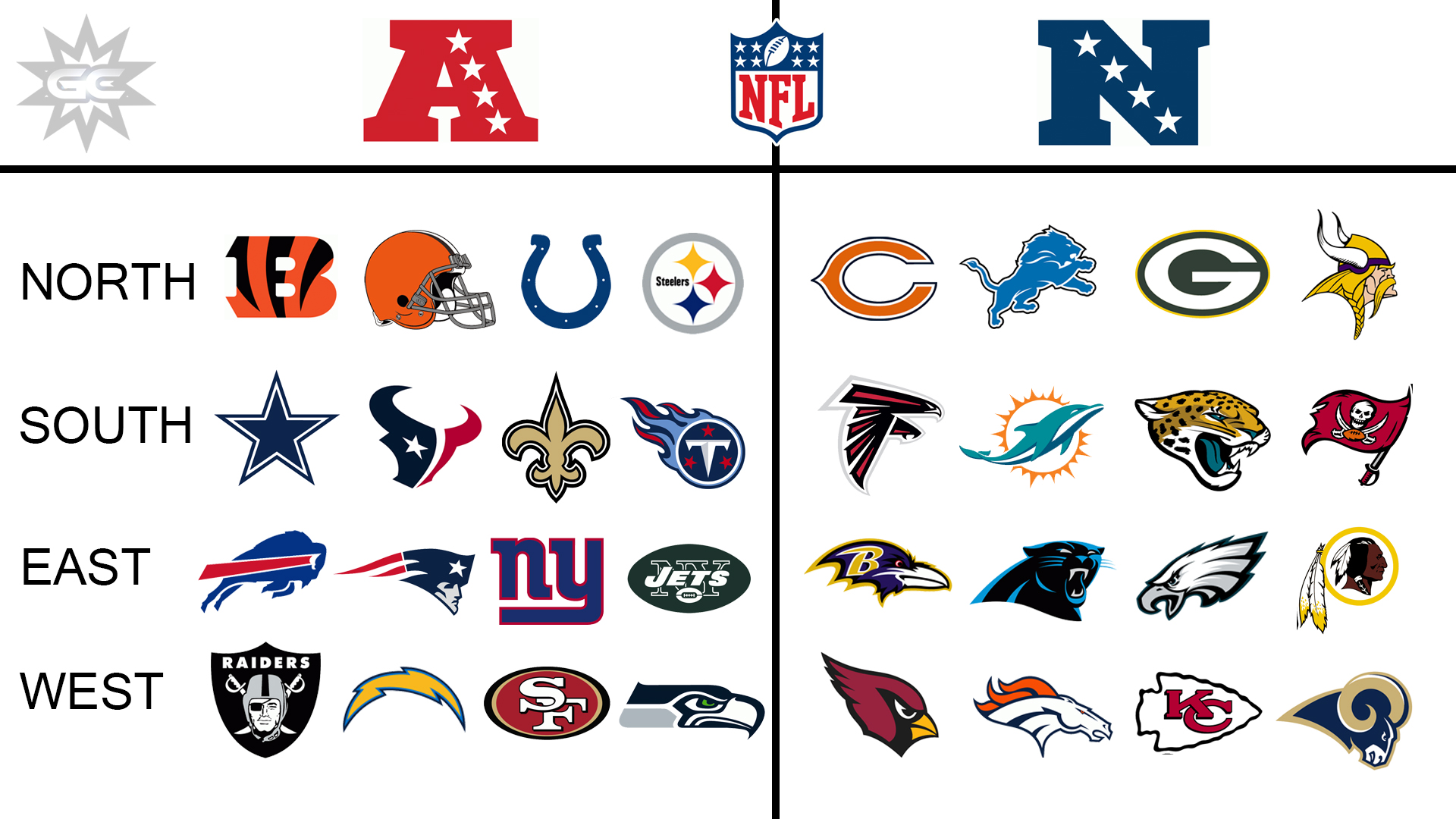The American Football Conference (AFC) and the National Football Conference (NFC) represent two of the most significant divisions in professional American football. Understanding the differences, history, and rivalries between the AFC and NFC is essential for any football fan or newcomer to the sport. This article will delve deep into the structure, history, and dynamics of both conferences, shedding light on what makes them unique and how they contribute to the overall excitement of the NFL.
In this comprehensive guide, we will explore the origins of the AFC and NFC, their key teams, memorable matchups, and much more. With a focus on the principles of E-E-A-T (Expertise, Authoritativeness, Trustworthiness), this article aims to provide reliable and engaging content for readers seeking to understand the intricacies of American football.
This article will not only discuss the technical aspects of the AFC vs NFC but will also highlight the cultural significance of football in American society. From legendary players to unforgettable Super Bowl moments, the rivalry between these two conferences encapsulates the spirit of competition that defines the NFL.
Table of Contents
- History of AFC and NFC
- Structure and League Play
- Key Teams in AFC
- Key Teams in NFC
- Historical Matchups
- Playoff Systems
- Super Bowl Legacy
- Future of AFC and NFC
History of AFC and NFC
The American Football Conference (AFC) and the National Football Conference (NFC) were born out of the merger between the American Football League (AFL) and the National Football League (NFL) in 1970. This merger aimed to unify professional football in the United States and provide a more competitive environment.
The AFC was formed from ten teams from the former AFL, while the NFC consisted of the remaining NFL teams. This division established a clear rivalry, as both conferences began competing for supremacy in the league.
Structure and League Play
The AFC and NFC each consist of 16 teams, divided into four divisions: North, South, East, and West. Each division comprises four teams, and the structure allows for a balanced schedule and competitive play throughout the season.
Regular Season Format
During the regular season, each team plays 17 games over 18 weeks, facing opponents from both its own conference and the other conference. This format ensures that teams have the opportunity to compete against a variety of opponents, enhancing the overall competition.
Playoff Structure
At the end of the regular season, the top seven teams from each conference qualify for the playoffs, which culminate in the Super Bowl. This playoff system is designed to highlight the best teams and create a thrilling postseason experience for fans.
Key Teams in AFC
The AFC is home to some of the most successful franchises in NFL history. Teams such as the New England Patriots, Pittsburgh Steelers, and Baltimore Ravens have consistently performed well in both the regular season and playoffs.
Pittsburgh Steelers
- Founded: 1933
- Super Bowl Titles: 6
- Notable Players: Terry Bradshaw, Franco Harris, Troy Polamalu
New England Patriots
- Founded: 1960
- Super Bowl Titles: 6
- Notable Players: Tom Brady, Randy Moss, Rob Gronkowski
Key Teams in NFC
The NFC also boasts formidable franchises, including the Dallas Cowboys, San Francisco 49ers, and Green Bay Packers. These teams have left a significant mark on the history of the NFL.
Dallas Cowboys
- Founded: 1960
- Super Bowl Titles: 5
- Notable Players: Troy Aikman, Emmitt Smith, Michael Irvin
San Francisco 49ers
- Founded: 1946
- Super Bowl Titles: 5
- Notable Players: Joe Montana, Jerry Rice, Steve Young
Historical Matchups
Throughout the years, the AFC and NFC have faced off in numerous memorable matchups, particularly during the Super Bowl. These games often define the legacies of teams and players.
Iconic Super Bowl Games
- Super Bowl III: New York Jets vs. Baltimore Colts
- Super Bowl XXV: New York Giants vs. Buffalo Bills
- Super Bowl LI: New England Patriots vs. Atlanta Falcons
Playoff Systems
The playoff systems for both conferences follow a similar format, with the top teams from each conference vying for the coveted title. Each conference's playoffs are structured to ensure that the best teams have the opportunity to compete for the Super Bowl.
Super Bowl Legacy
The Super Bowl is the pinnacle of American football, showcasing the champions of the AFC and NFC. The event has grown into a cultural phenomenon, attracting millions of viewers worldwide and featuring elaborate halftime shows and commercials.
Future of AFC and NFC
As the NFL continues to evolve, so too will the dynamics of the AFC and NFC. With emerging talent and changing strategies, fans can expect exciting developments in both conferences in the coming years.
Conclusion
In conclusion, the rivalry between the AFC and NFC is a cornerstone of American football. Understanding the history, structure, and key teams within each conference enhances the appreciation of the sport. As fans, staying informed and engaged with the latest developments will only deepen your connection to this beloved game.
We encourage you to share your thoughts on the AFC vs NFC rivalry in the comments below. If you enjoyed this article, consider sharing it with fellow football fans or exploring more articles on our site to stay updated on all things NFL.
Penutup
Thank you for reading! We hope this article has provided valuable insights into the dynamic world of the AFC and NFC. We look forward to welcoming you back for more exciting content in the future.
Irfan Pathan Wife: A Deep Dive Into Their Love Story And Life Together
Cobblestone Generator: The Ultimate Guide To Creating Infinite Cobblestones In Minecraft
Best GTA Names: Creative And Unique Ideas For Your Character


